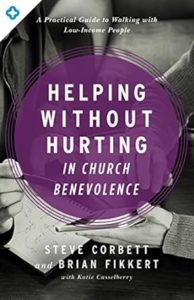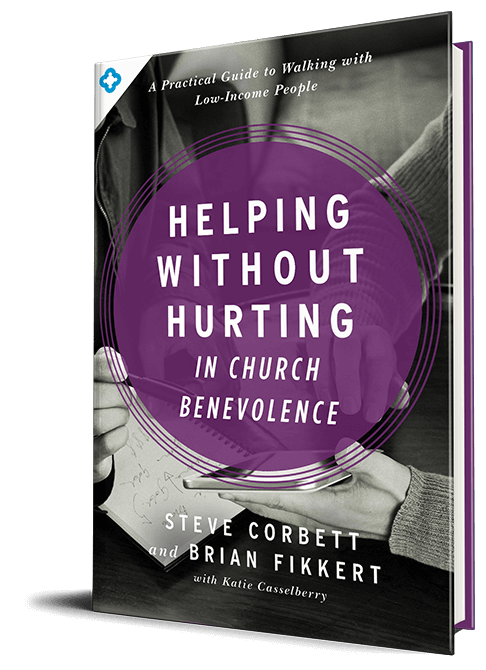Helping Without Hurting in Church Benevolence
Nathan Mayo
Membership Director
Read more from Nathan
Jump to:
The Purpose of the Book | The Perspective | The Key Points | Details We Love | Considerations | Who Should Read This?
The Purpose of the Book
Helping Without Hurting: In Church Benevolence, by Steve Corbett and Brian Fikkert, succinctly answers the question of how to put principles of When Helping Hurts into practice. A short book with an easy to follow layout, this volume refreshes the theory and hammers out the details of how to implement a truly helpful benevolence program.
The Perspective
The book opens with a contextualized summary of the philosophy expounded in When Helping Hurts. Poverty is a breakdown of four key relationships: individuals with themselves, with others, with God, and with creation. Poverty, in this sense, affects all of us regardless of how much money we have in the bank. Because of this, we come alongside the materially poor with humility, not superiority. They also discuss the hidden obstacles that the poor face and how your ministry can help them move through the “change cycle.”
The Key Points
Corbett and Fikkert then go on to address the specifics of building a benevolence program.
Creating Policies and Philosophy: Chapter 3 lays out a list of questions your ministry should answer about its objectives which will help you structure your program. Who will we help? What type of help will we give? How will we design our intake process? How will we share our guidelines? They then talk you through various options and the considerations of each relevant to your position. You must know what you are trying to accomplish in order to achieve it.
Walking People Through Change: This section walks you through two crucial tools. The first is a good intake process, which will identify underlying issues with which you may be able to offer assistance. The second is a client-driven action plan. You should be willing to help people with their deeper problems if you are creating a benevolence program. A good approach is relational – not “charity with tongs.”
Building Your Church’s Capacity: A great benevolence program is a team effort. Your church members should know when they are needed, be expected to step up, receive clear guidance, and know that you are grateful for them. This section gives you the tools to engage volunteers as well as to build a community resource directory that will help your team direct clients to the most helpful place for their situation.
Details We Love
We always appreciate the structured but nuanced take of Corbett and Fikkert on the nature of poverty. This book is built on a firm foundation. This book also incorporates some of our favorite ideas, like networking digitally with other churches and non-profits in your communities using software (e.g. Charity Tracker or Charity Check) and creating a resource and referral network in your community. The book encourages hope, cooperation, and humility – traits that are welcome in any program. Its practical tone is amplified by specific tools built by real-world churches. The case studies in the back of the book do an excellent job at helping readers apply the key lessons from the book.
Considerations
We wish this book would have explored alternative options to traditional benevolence programs. Micro-loans can work very well in developing countries, and we have seen churches in America effectively use interest-free loans in place of gifts in certain situations. Additionally, we have also seen churches use work to help people. “We won’t give you money for this type of situation, but we have some work we could pay you to do.” This is a biblically justifiable component of a benevolence program, and while there are pros and cons to it, we do not believe it should be dismissed out of hand.
Who Should Read This?
We would recommend this book for anyone who oversees or has any input on a church benevolence program. It could also be useful to any non-profit program that has a cash-assistance component. It is a quick read with a good perspective and it offers a great blueprint for a new ministry or fresh ideas for an existing one.

The Chalmers Center also offers a great set of free tools, including intake sheets, sample policies and more.
This article is just the tip of the iceberg for the practical resources available through the True Charity Network. Check out all of the ways the network can help you learn, connect, and influence here.
Already a member? Access your resources in the member portal.





